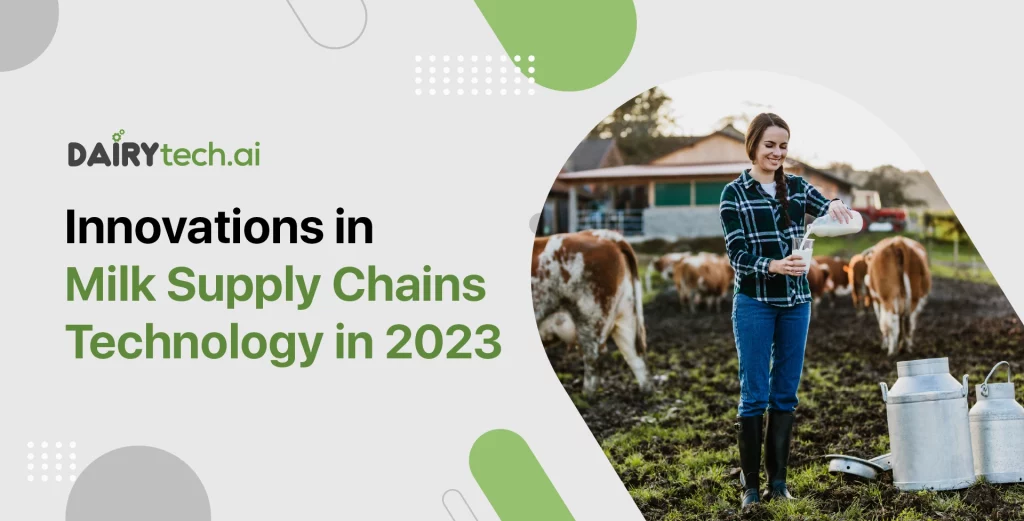Innovations in Milk Supply Chain Technologies in 2023
The integration of advanced technology is revolutionizing the milk supply chain from dairy farms to retail shelves with a dynamic ecosystem driven by cutting-edge technologies. At each step of its journey, the milk supply chain is accepting improvements that hold out the possibility of greater effectiveness, transparency, and sustainability.
The integration of the latest technologies has ushered in a new era in dairy management and distribution. In this post, we will investigate the transformation of its supply chain, and explore cutting-edge technologies that are altering the dairy sector’s environment.
These are some of the latest technologies transforming sales and distribution in the milk supply chain:
Inventory Management System
Inventory management systems utilize a combination of software and hardware to keep an accurate and up-to-date record of available inventory. Through this, businesses are able to ensure they are not overstocked or understocked, leading to more efficient cost control and improved customer satisfaction.
Transport Management System (TMS)
Transport Management Systems make it simpler to move milk products from suppliers to retail outlets and distribution centers. It results in cost reductions and better delivery performance by taking advantage of GPS and route optimization software to map out the most effective delivery routes. This technology takes into account traffic, destinations, and any changes that may occur in the meantime to help reduce the amount of time and fuel needed.
Online Milk Delivery Platform
Online milk delivery platforms have become increasingly common, granting customers the opportunity to purchase milk and dairy products via websites or mobile apps, straight from dairy farms or stores. This provides convenience for shoppers and eliminates the need for middlemen, increasing the effectiveness of the milk sales and delivery system.
Demand Forecasting Software
Future demand forecasting software uses historical sales data, market trends, and other factors to predict future demand for products. This information helps retailers plan inventory levels, promotions, and pricing strategies proactively allowing them to plan and strategise their future business sales.
Electronic Proof Of Delivery (ePOD)
Data regarding deliveries are electronically documented and sent using either mobile tools or handheld devices specifically intended for this purpose in ePOD systems. Photos of the package delivered, as well as the recipients’ digital signatures can be recorded, and all the data is kept digitally for easy tracking and confirmation.
Reverse Logistics
Businesses that deliver milk in glass bottles must retrieve the empty bottles, which requires a tracking system. Reverse logistics is used in return management that allows vendors to track and manage empty milk bottles.
By leveraging these technologies, you can streamline supply chain operations, improve inventory management, and respond quickly to changing market demands, ultimately providing a better experience for your customers. These technologies are helping to improve efficiency, traceability, and sustainability, which is benefiting dairy farmers, processors, and consumers alike. As these technologies continue to develop, we can expect to see even more improvements in the future. To learn more about the supply chain in the dairy business, you can schedule a brief call with our dairy expert.

